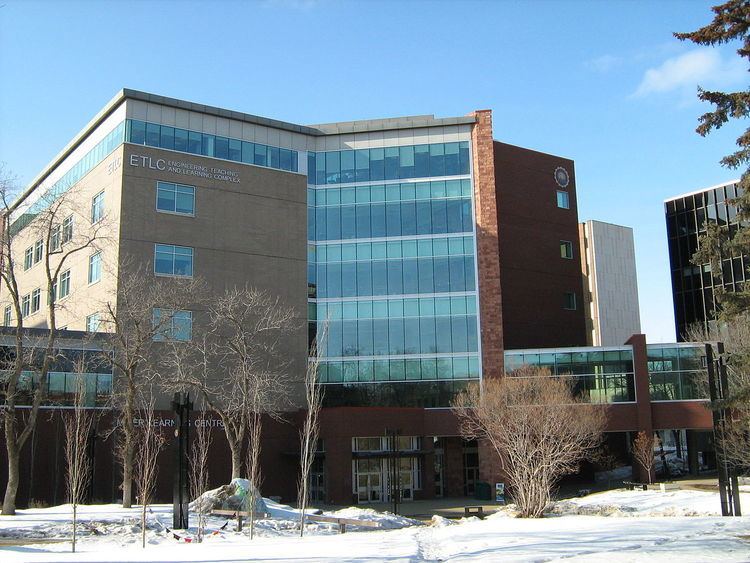Established 1908 (1908) Dean Fraser Forbes Founded 1908 | ||
 | ||
Profiles | ||
The University of Alberta Faculty of Engineering is one of the largest engineering schools in Canada in terms of size, international impact, and reputation. The faculty is home to 1 Canada Excellence Research Chair, 16 Canada Research Chairs, 13 Natural Sciences and Engineering Research Council chairs, and 5 Foundation Supported Chairs.
Contents
History
Engineering classes have been taught at the University of Alberta since it opened in 1908.
Undergraduate
The undergraduate bachelor's degree program for engineering is based on a 4-5 year program. The traditional program involves taking two terms (fall and winter) for four years to complete a degree. The co-op program involves intermittent work placement terms, within a 5-year period. Co-op programs are usually in higher demand by students than the 4 year "Traditional" programs, and thus the entrance GPA tends to be higher.
New students to engineering must first take two terms of general engineering courses before specializing into various departments. These courses include introductory chemistry, waves and light, statics, dynamics, calculus, linear algebra, computer programming and one complementary studies elective. This is structured to give students a feel of their areas of interest and strength, before fully entering into a specialized program. It also allows for ranking each student on a level playing field to decide program admission in second year. A sixth course in each term (General Engineering 100 and 101) must also be taken as an introduction to both the engineering profession, and as a means for each department to recruit students.
Departments
The departments in engineering at the University of Alberta are as follows:
Each department also has a biomedical option, a program that applies engineering principles to medical practice.
Graduate
All five Faculty of Engineering departments offer MSc, MEng, and PhD programs.
Key Research Facilities
Campus
Faculty of Engineering facilities are located mainly in the north-west corner of the University of Alberta campus and have experienced much growth since 2001. The joint Engineering Teaching and Learning Complex (ETLC) and Electrical and Computer Engineering Research Facility (ECERF) was completed in February 2002. ETLC contains the main Faculty of Engineering offices, several lecture halls, and many electrical and computer engineering laboratories. ECERF houses department and faculty offices as well as for lab space for graduate and postdoctoral work. The Allan P. Markin/Canadian Natural Resources Limited Natural Resources Engineering Facility (NREF) was added on October 1, 2004, and houses most civil and environmental engineering programs. Most recently, the National Institute for Nanotechnology was opened in June 2006. As a joint venture between the federal and provincial governments of Canada and Alberta and the University of Alberta, the institute houses some of the world's best nanotechnology facilities. It is Canada's quietest research space, filtering out all electromagnetic, acoustical and vibrational noise. Other facilities include the Mechanical Engineering and Chemical/Materials Engineering buildings, both of which are connected to ETLC by pedway.
A new structure, the Donadeo Innovation Centre for Engineering (D-ICE) was erected between the Chemical and Materials Engineering Building and the Windsor Car Park. The new building will provide approximately 28,400 square metres of space to support expanded educational and research activities in the Faculty of Engineering. The building houses faculty members, staff, and students from every engineering discipline.
